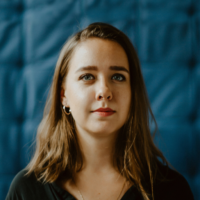Distinguished
Reporting
Award
Poland’s ministry of memory spins the Holocaust
published by Coda Story, Georgia
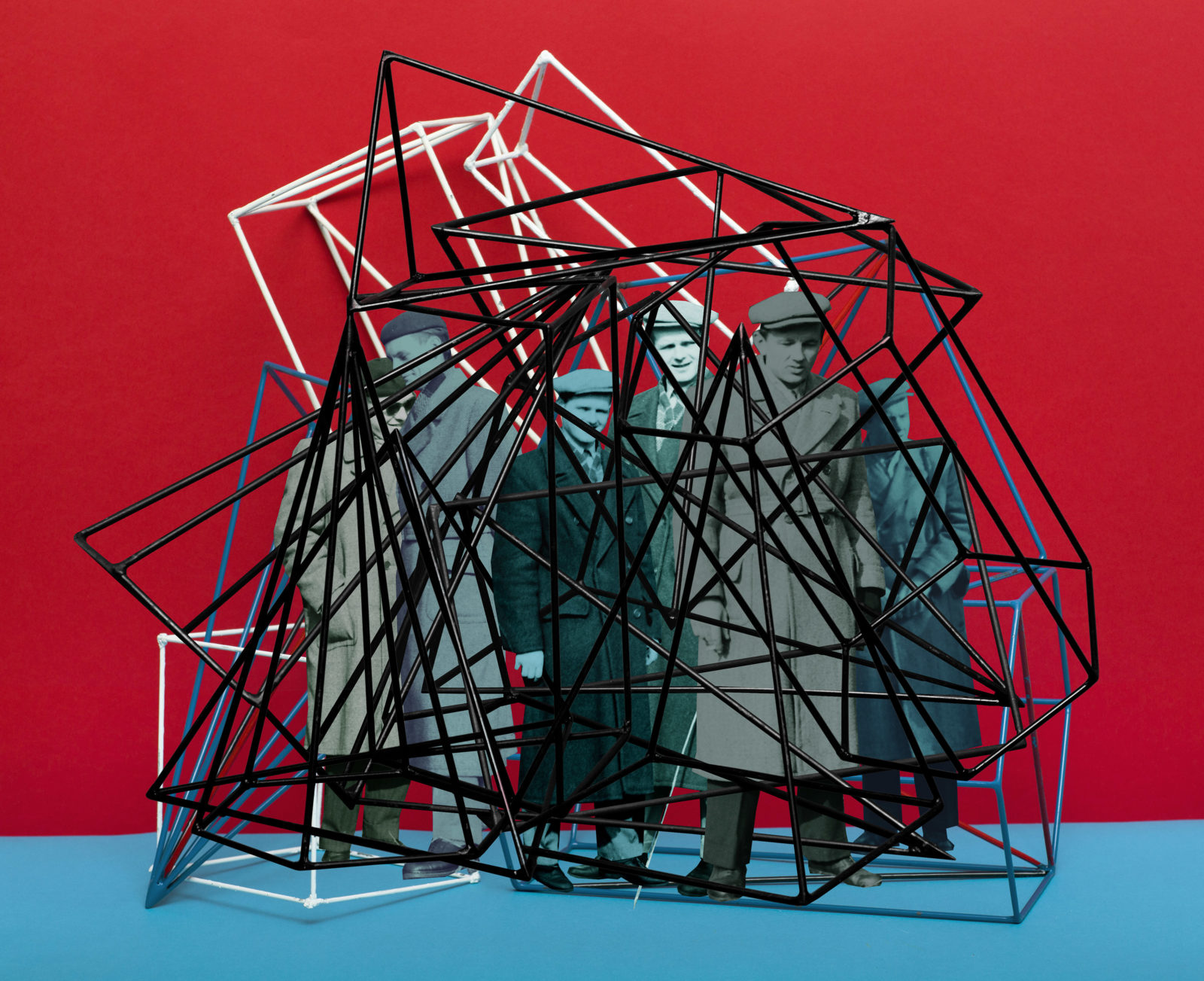
ARTWORK BY RAFAL MILACH/MAGNUM PHOTOS
For years Olympic slalom canoeist Dariusz Popiela, 36, trained on the Dunajec river in southern Poland. During his twenties, he paddled every day on a churning stretch between two bridges in his hometown of Nowy Sacz. He never thought that this place so familiar to him would become the source of what can be called his memory rebellion. Popiela has always been fascinated by history. He grew up quizzing his grandfather about his childhood memories of life in Nazi-occupied Poland.
But there was an enormous chapter that his grandfather had ripped out of his mental storybook of recollections: the nearly 12,000 Jews who lived in Nowy Sacz before 1939 — about a third of the town’s pre-war population. They had disappeared from the town’s memory. Absent from lessons at school, it wasn’t until Popiela began his own research that he learned about the scale of Jewish life in Nowy Sacz and in Poland. With a thousand years of Jewish history, the country was home to the world’s largest Jewish population outside of the United States at the start of World War II.
Popiela was floored when he read the details of how Jewish residents from his town were transported to the neighboring Belzec death camp. Many spent their final night in Nowy Sacz huddled on the riverbank exactly between the two bridges where he had paddled in his canoe so often.
“They saw this same view. They heard the same river voices and sounds,” Popiela said when we stood by the riverbank this past May. Running through some of the most picturesque scenery in southern Poland, the Dunajec river flows through steep gorges, pine forests and fields of tall grass growing right up to its fast-moving waterline. Popiela pointed to families cycling by and couples walking along the river path. “Half of the city disappeared and you have no memory,” Popiela said, shrugging his shoulders. “How is that possible?”
Since his discovery, Popiela has led dozens of commemorations to Jewish life across Poland through his foundation “People, Not Numbers.” Popiela is part of a new generation of Polish citizens, historians, writers and educators pushing for a more honest confrontation with Poland’s 20th century history.
For decades, Polish-Jewish history was kept in what scholars call “the communist freezer.” Around three million Polish Jews were murdered by the Nazis. It wasn’t until the 1960s that Polish communist authorities tolerated much discussion of the genocide. When they did — such as during an anti-semitic purge of the party in 1968 — it was to blame Jews for not showing enough gratitude towards ethnic Poles who tried to save them.
After the fall of communism, some of that silence was broken. More recently, the country’s ruling right-wing government has been consolidating a nationalistic narrative about the past that emphasizes pride over what they say are a politics of shame. It has been effective. Recent surveys show Polish people believe that more than half of Poles directly helped or hid Jews in their homes during Nazi occupation, an absurd overestimate. Those like Popiela who work to commemorate Jewish victims are accused of promoting what’s been coined by the government as a “pedagogy of shame.” The term is used as a political slur by Jaroslaw Kaczynski and members of the party he leads, the ruling Law and Justice party. It has come to mean a liberal historical agenda that exaggerates dark facets of Polish history.
At the center of these competing historical narratives is Poland’s ministry of memory — called the National Institute of Remembrance, IPN in Polish, which was created in the early 2000s to deal with the country’s communist legacy, manage the historic KGB archives and prosecute crimes committed under communism. Today the Institute also largely deals with the legacy of Nazi occupation and is charged with defending the country’s “good name.” The IPN was at the center of international fury in 2018 when the government passed a “Holocaust law,” known as the “IPN law” within Poland, making it a criminal offense to “defame” the Polish nation by claiming Polish people had responsibility for Nazi crimes.
The IPN is one of Poland’s most powerful institutions, with its budget making it the largest institute of historical research in the country, eclipsing university history departments and independent research institutes. A one-of-a-kind bureaucratic creation, it is the country’s most prolific publisher of historical texts, a prosecutor’s office, a production house of historical films and games, and a major authority shaping what students across the country are taught about history in school. The Institute of Remembrance’s budget has nearly doubled under the Law and Justice Party, which has been in power since 2015. Today it has an annual budget of 430 million PLN ($105 million), a staff of about 2,000 and 11 regional branch offices.
With its leadership appointed by parliament, the Institute is controversial in an already highly polarized political environment. There is demand from a number of leading historians for the Institute to be dismantled or reformed. Far more widespread opposition comes in the form of local level initiatives like Popiela’s that are trying to change memory culture in Poland.
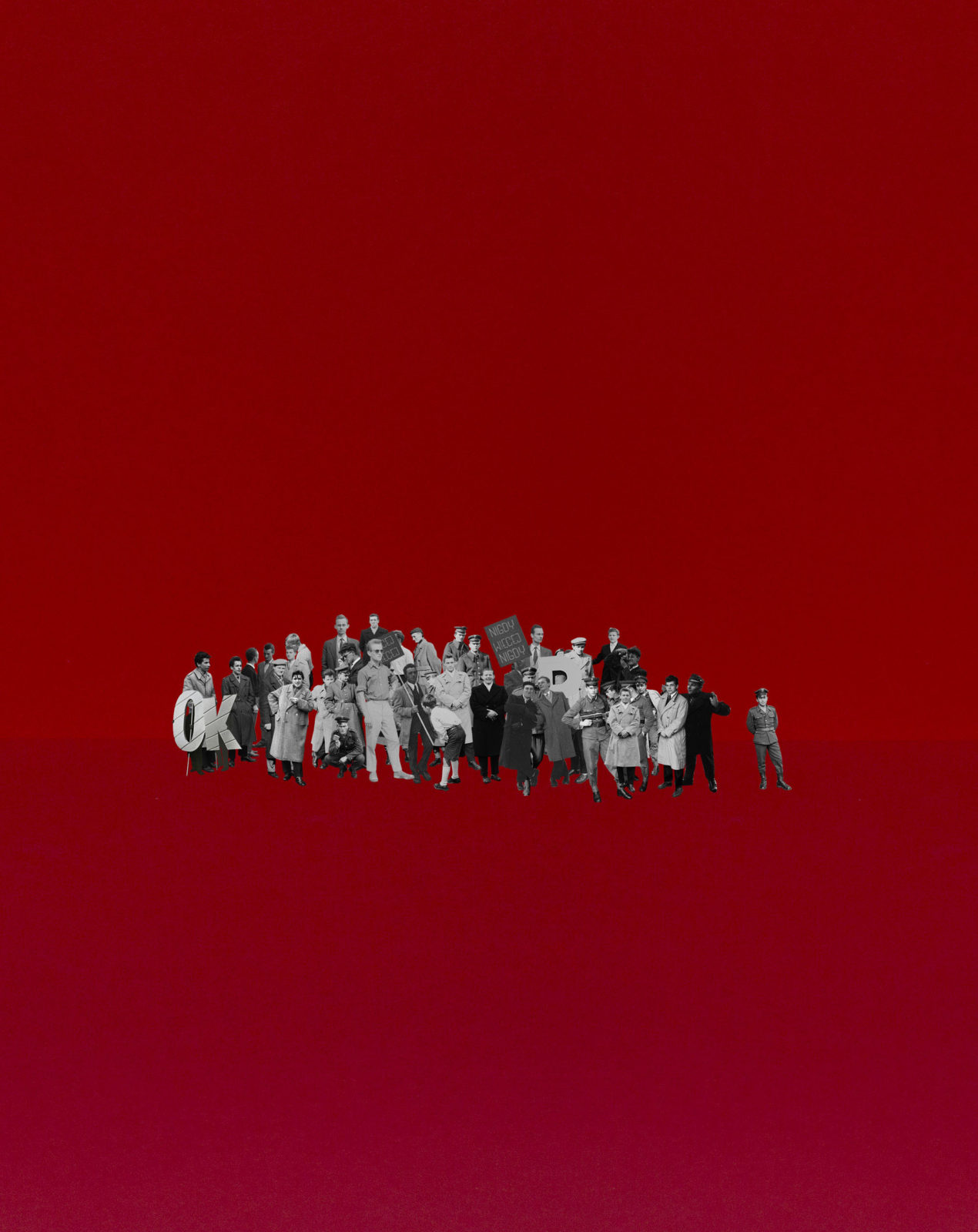
ARTWORK BY RAFAL MILACH/MAGNUM PHOTOS
A memory rebellion
When Popiela learned about the concentration camp on the banks of the Dunajec, just steps away from the beautifully preserved town square in Nowy Sacz, his first feeling was in fact shame.
Each new detail that emerged felt personal: the dam further up the Dunajec river was built by forced Jewish labor, he discovered; and he later found slabs of 17th century matzevot, or Jewish gravestones, used in the construction of town infrastructure, their Hebrew script just barely still legible off the curb of a busy roadside.
“But the shame was something that gave me power,” said Popiela. “It gave me rebellion and the power to do something.”
For the past ten years, Popiela has devoted the time he has outside of his sport to commemoration work. With just a handful of members, his foundation, People, Not Numbers, has researched archives and interviewed older residents to identify the name, surname and age of Jewish victims across rural Poland. They’ve installed 10 monuments and discovered 10 mass Jewish grave sites. Volunteers maintain a number of Jewish cemeteries that were abandoned. Popiela self-publishes what he calls — with a wink — his “underground” monthly newspaper about Jewish history in Nowy Sacz. He leaves out stacks at local coffee shops and in the town hall.
When we meet in May, Popiela is about to break ground on his most recent project: a memorial park in Nowy Sacz located within what had been the town’s Jewish ghetto along with the installation of a plaque along the Dunajec river bank at the site of the former camp. All of the efforts are crowdfunded by Popiela. I asked him, why is he — an Olympic canoeist about to compete in the European Championships — doing this in a country that’s created an entire state bureaucracy to deal with historical remembrance.
“They are caring about other stories,” he said. I push him to elaborate and he gives an example. A few years ago the foundation tried to team up on the commemoration of a Jewish family of eight, murdered in 1944 after being turned over to the Gestapo by their neighbor. The Institute’s local branch said the memorial plaque must say that this family was killed by the Nazis. Popiela refused.
“Do you put the name of the murderer of your family on their grave?” asked Popiela. It’s the same demand he’s just recently received in an open letter from several local, patriotic organizations in opposition to his plan for building a monument to Jews killed in Nowy Sacz. “They don’t have the point of view of the victims. The most important part for them is the sign that the Germans made the Holocaust.”
Poland has long tried to police language around the Holocaust. When former U.S. President Barack Obama referred to “Polish death camps” during a 2012 visit to Warsaw, the White House was compelled to apologize. Right-wing lawmakers made several attempts to introduce a three-year prison sentence for using the term.
A widely shared perception among Poles is that the rest of the world underappreciates Polish suffering during Nazi occupation. “They have this obsession that starts when people say that Polish people are responsible for the Holocaust. Now the narrative of the IPN is that nearly all Polish people had a Jew hidden in their basement,” said Popiela. “They are saying that we were all heroes. But from the archives, it doesn’t look so nice.”
I took a ride with Popiela over to the neighboring town of Grybow where in 2019 he and his team of volunteers had installed a memorial in a Jewish cemetery on a hill overlooking the town. Abandoned for 80 years, the cemetery was a fenced-in jungle. Today, it’s a peaceful, wooded plot with several informative plaques displaying photographs of victims installed by the foundation. The centerpiece is a large granite monument of a splintered matzevah, with slabs on either side listing the name and ages of the nearly 2,000 Jewish victims killed in Grybow during the occupation, nearly a third were children under the age of 13.
Further uphill, Popiela crouches down and starts pulling the weeds coming up over a mass grave site they had discovered using a drone and geo-radar. He tells me about some of the online hate he gets for his work, people accusing him of working for George Soros or telling him he’d be better off spending his time cleaning up Catholic cemeteries. When seeking funding, he’s often told to find some “rich Jew” to pay for the memorial.
We drive back down the hill from the cemetery to town and pass the local Grybow church. It’s Sunday afternoon and the red brick church is packed, with dozens of people crowding at the doors and even standing in the square outside. Just a few steps away from the towering basilica stands Grybow’s Jewish synagogue, abandoned and with its windows knocked out. There are no Jewish people in Grybow. Across from the synagogue an artist has recently painted a large mural in sepia tones. The mural is based off of a 1922 photograph showing three generations of Grybow’s lost Jewish residents.
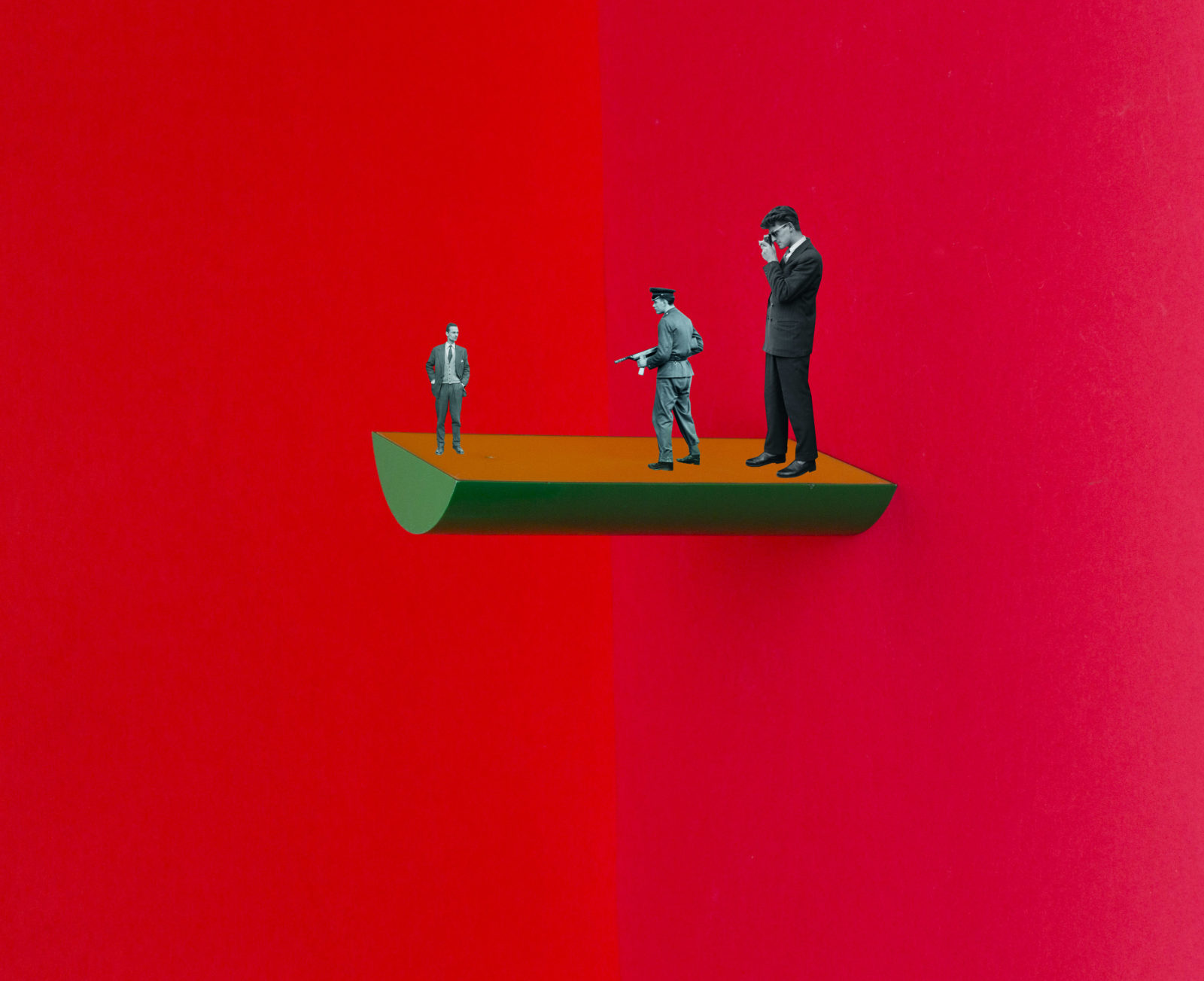
ARTWORK BY RAFAL MILACH/MAGNUM PHOTOS
The Ghosts are coming back
“We are the main enemies of the Institute of National Remembrance,” said Agnieszka Haska, a cultural anthropologist at the Polish Center for Holocaust Research in Warsaw. It’s one of the first things she tells me when we meet.
Much of Haska’s work focuses on questions of collaboration and Jewish escape from occupied Poland and she says the IPN has put her publications and other writings from the center constantly under the microscope. The institutes’ team of fact checkers flags perceived mistakes, sometimes even a footnote, and publishes lengthy rebuttals. The vice president of the IPN told me it’s part of an “ongoing academic debate.” Called traitors on public TV channels, Haska said “it feels much more like an ongoing war.”
It can also get petty. Haska says she’s called the IPN numerous times asking them to stop their regular deliveries of the latest IPN volumes of historical research to the Holocaust Research Center’s office. The institute’s historians are prolific, publishing up to 300 titles a year. The publications flood national bookstores and are subsidized, making it even harder for non-IPN authors to sell their titles. “They are trolling us!” Haska said.
Some of Haska’s recent writing looks at Polish antisemitic science fiction, a popular genre during the 19th century. Writers could pass off their anti-Jewish texts as “fantasy” books to get by the Russian empire’s censors. Haska is focusing on one novel written by Tadeusz Hollender in 1938 called “Poland Without Jews.” Largely lost to history, Hollender’s fantasy fiction was meant as a critique of Polish antisemitism. In Hollender’s satire, the Jews of Poland finally decide they’ve had enough. Families across the country pack up their belongings and begin a long journey to a new land, settling on Madagascar. Suddenly, Christian Poles find that they have no more Jewish neighbors, no one to beat up or to blame for their misfortunes. It turns out that life in Poland without Jews isn’t what they had hoped. So the characters in Hollender’s fiction summon a delegation that sets off for Madagascar and begs their Jewish compatriots to return back home with the words, “We don’t know who we are without you.”
Just a few years after Hollender’s book was published in 1938, the German army retreated from Poland. The Jews had been almost entirely exterminated. Close to 90% of Polish Jews were murdered in the Holocaust. About 20% of Poland’s total population died of war-related causes, including author Tadeusz Hollender who was shot by the Gestapo in 1943 for his role in the Polish underground. After the war, many of the Jews who managed to survive emigrated to Israel or the U.S.
Writing about the Second World War in Poland, the country’s most well-known historian Jan Gross quoted a Holocaust-era memoir: “This was a war which no one quite survived.” Nearly six million Poles perished during the six years of Nazi occupation. Gross gives some numbers to describe the utter devastation of Polish urban life: nearly a third of all urban residents missing following the war, 40% of Polish doctors killed, 30% of university professors and Catholic clergy and 55% of lawyers dead by the end of the war. Soviet occupation brought its own brutality, with the massacre of 22,000 Polish military officers by the Soviet Army in 1940 in Katyn and campaigns of terror waged across the country by the NKVD, the Soviet secret police.
To this day, many in Poland remain bitter, believing they had been sold out to the Soviet Union by the West at the end of the war, condemned to 50 years of communist authoritarianism. “Eighty years on, the Second World War still dictates our present,” said Haska. “It’s really scary if you think about it, but the world really ended on the first of September 1939.”
Haska then tells me about one of her first trips to Israel years ago. She remembers her shock, and shame, when people across the country immediately recognized the name of her hometown of Ciechanow in northwest Poland, population 43,000. She got a history lesson from the Israelis she met about how the town used to be nearly half Jewish and about Roza Robota, one of the four women who led an uprising in Auschwitz in September 1944. She was from Ciechanow.
“Everybody knew where Chiechanow was and everybody knew her name,” Haska remembers. “I grew up 50 meters from a Jewish cemetery in Ciechanow and I had no idea.”
The only trace of Robota’s life in Ciechanow is a street named after her, stretching for three blocks on the outskirts of town. Three short blocks that reflect the preference for certain historical narratives by the Law and Justice party and the IPN. Jewish victims of the Holocaust are commemoratated as a backdrop for a sweeping story of Catholic Polish heroism and resistance. Little to no space is allowed for one of the cruelest truths of 20th century authoritarianism: People became complicit in their own subjugation.
This truth is one of the opening observations in Jan Gross’s book “Neighbors,” which rocked Poland on publication in 2000 and is still highly controversial today. The book details the previously unstudied July 1941 massacre of Polish Jews by their non-Jewish neighbors in the town of Jedwabne. During the pogrom, Gross writes that German involvement was limited to standing by and taking photographs. In the early 2000s, the newly created IPN confirmed that it was the Polish residents who killed their neighbors. A year after the book was published, at a ceremony in Jedwabne, Polish President Aleksander Kwasniewski publicly begged for forgiveness.
More recently there’s been backlash. There is an ongoing campaign to exhume the bodies of the Jewish victims in order to prove that they were killed by German soldiers, and not their neighbors. Commenting about Jedwabne and the Kielce massacre, led by Polish residents in 1946 in a northern town after the war, the country’s minister of education refused in a 2016 interview to acknowledge that Polish people were responsible, saying that this “has been misunderstood many times.”
Overnight in Jedwabne, an entire town learned that their grandparents either took part, or stood by, in the brutal massacre of Jews, many of whom were burned alive. There are a number of historians studying historical backlash in Poland. Social psychologist Michal Bilewicz has looked at how people who have experienced historical trauma are more prone to believe in conspiracy theories as an adaption to the trauma, and how educational programs about the Holocaust have in some cases caused symptoms of PTSD in Polish participants or fueled disbelief and a rejection of the facts.
During our meeting in Warsaw, Haska told me a story about her aunt who a few years ago got a knock on the door of her home, a beautiful villa built in the 1930s. The woman at the door was German and she had come to see if her old family home was still standing. She had grown up there as a little girl when the territory was part of Germany. In January 1945, the family fled as the Soviet Army advanced across Poland. The women spoke to each other in German. Haska’s aunt told the visitor how her two brothers were killed by the Gestapo in 1943. The German woman shared her memory of her little brother dying as the family escaped their home in the winter of 1945.
“Half of Poland is living in someone else’s home, not only Jewish but German too,” Haska said. “But the ghosts are coming back.”
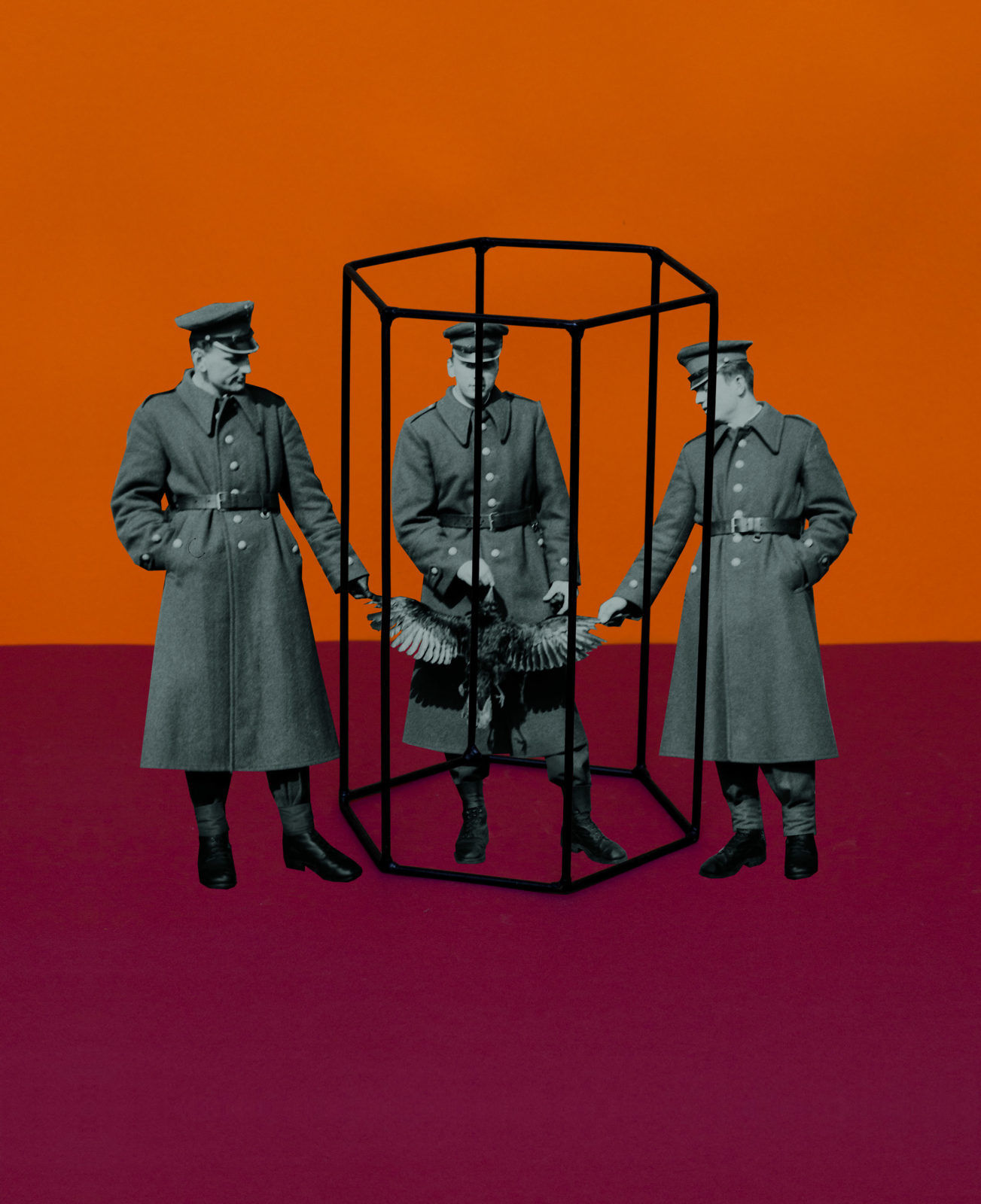
ARTWORK BY RAFAL MILACH/MAGNUM PHOTOS
Patriotic Blackmail
Across Poland, there’s a history museum boom. Over the past fifteen years, nearly a dozen new history museums have opened. In pre-covid years, museums in Poland — a country of 38 million — had 38 million visitors, topping ticket sales for the national soccer team. A number of these new museums have also ushered in scandals and embarrassing international headlines.
In 2020, the director of Warsaw’s renowned POLIN Museum, historian Dariusz Stola, was pushed out by the government. In 2017, the Minister of Culture replaced the director of Gdansk’s new World War II Museum with a more friendly candidate — historian Karol Nawrocki, who today serves as President of the Institute of National Remembrance. The Museum of the Warsaw Ghetto Uprising hasn’t even opened yet but is already drawing accusations of politicizing history. Another museum, the Warsaw Uprising Museum which opened in 2004, found itself again in the media spotlight after unveiling a new “Room of the Young Insurgent” exhibition, filled with stuffed animals, crayons and the “inspirational” stories of young child combatants in WWII, along with a statue of a Polish child soldier holding an automatic weapon.
While the IPN is not tied to any of these museums, the Ulma Family Museum of Poles Saving Jews is perhaps the best brick and mortar representation of the institute’s politics. Opened six years ago, the Museum was curated by the IPN’s current vice president, Mateusz Szpytma.
Polish President Andrzej Duda attended the opening ceremony of the museum — located two and a half hours outside Krakow in the village of Markowa, population 4,000.
“The world does not know the reality that prevailed in Poland during the years of occupation, and it is this ignorance that hurts the good name of our country,” Duda said in a speech in the museum’s courtyard.
In photos from the opening day, Duda is lit up by some of the courtyard’s thousands of glowing plaques, each carrying the name of a Polish citizen murdered for helping Jews during the war. Many of them have received Israel’s esteemed designation of the Righteous Among Nations given to people who undertook extraordinary risks to help Jewish people during the war. Poland has the largest number of Righteous internationally: over 7,000 Polish citizens, many of whom were killed for their actions.
The museum tells the story of the Ulma Family who sheltered eight Jews in Markowa during German occupation. After being denounced, the entire Ulma family along with the Goldman, Didner and Grunfeld families were shot to death, seventeen people including children and an unborn child.
Walking through the courtyard to the museum entrance, visitors first see a large illuminated photograph of the Ulma family, taken by the family’s father, Jozef Ulma. Ulma was by all accounts a renaissance man who took dozens of photos of his family with his camera, a rare and prized possession in a Polish village in the 1930s.
The exhibition, housed in a minimalist, modern metal and glass structure, features many photos he took of his family, neighbors and surrounding landscape, some still stained in the family’s blood. The Ulma Family Museum highlights the cruelty of the war, that 20% of Markowa’s Jews survived the war in hiding — an unusually high survival number — and the intense pressure villagers faced to collaborate and inform.
“I would like every visitor to this museum, among others, to know the drama that befell the Jewish people during World War II,” said the IPN’s Vice President Mateusz Szpytma who was the first historian to lead the investigation into the Ulma story. He estimates that tens of thousands of Jews survived in Poland thanks to help from non-Jews. “I would like them to know that even in the most difficult moments of totalitarianism there is the possibility of helping people in need. It is up to us individually how we behave, whether we stand with traitors, whether we are heroes, whether we risk our lives for other people.”
Outdoors there’s a large memorial grave to the family with a Polish coat of arms, a cross and on the ground, a fresh bouquet of red roses. Seven urns with the remains of the Ulma family are displayed. The Jewish victims who were hiding at the Ulma family home are buried elsewhere, in a military cemetary about 15 miles away. Golda Grunfeld, Lea Didner and her child as well as five men by the name of Goldman are not listed. They are memorialized collectively with some of the three hundred nameless Jewish Poles murdered during the war and buried there.
Some of Poland’s most prominent historians, Jan Grabowski, Agnieszka Haska at the Holocaust Research Center among others, have been vocal critics of the framing of the exhibition. The Ulma Museum in some ways is an important break with the past. For decades in Poland, people given the Righteous designation hid it from their neighbors and family members out of fear of stigmatization and persecution. Honoring them on a national level has been long overdue, but critics say this is being done at the expense of the Jewish people they saved who are reduced to vehicles for Polish heroism.
“As a Polish citizen, a Polish researcher, I’m totally into commemorating these rare exceptions of noble Poles who were brave enough to somehow oppose this wartime reality. But at the same time these biographies are being used as a kind of patriotic blackmail,” said Maria Kobielska, who co-founded the Center for Research on Remembrance Culture at Jagiellonian University in Krakow. She has been researching new history museums and has written about the Ulma Museum.
“The general message is that this was the typical attitude of Polish people, to act as Jozef and Wictoria Ulma. If you oppose this narrative and this museum you somehow oppose the memory of the Ulmas,” Kobielska said. “These people are used as an alibi for anyone who is Polish.”
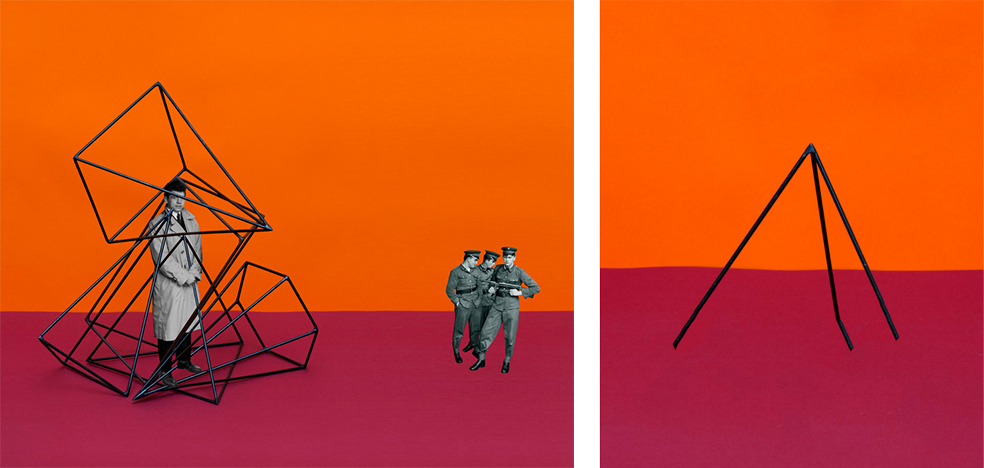
ARTWORK BY RAFAL MILACH/MAGNUM PHOTOS
Maria Babinska at the Center for Research on Prejudice at Warsaw University has been running social psychology surveys over five years. “We asked people to imagine — since the specific historical percentages are not known and will never be known — their estimate of how many Poles collaborated with Germans and the percentage who were indifferent,” said Babinska.
The study showed that Polish people believe that close to 60% of Poles selflessly helped Jews during World War II, but also believe that 25% of Poles collaborated with Nazis.
The results were highly polarized, a split based on which political party respondents voted for but also by factors such as expressing antisemitic views or supporting the IPN Holocaust law.
I asked the IPN’s vice president Mateusz Szpytma what he made of these numbers: “I don’t think Poland is an exception here, people misperceive history,” said Szpytma. “It’s important to show history as it was, what you have to be proud of and the things that were bad, you have to be ashamed of them. These two sides are strongly present in our work at the Institute of National Remembrance.”
Babinska attributes the results of her research to basic human psychology: members of a community often overestimate the morality of their group.
Morality, identity, being part of an ingroup have all been powerful themes in the Law and Justice party’s electoral campaigns. Campaign slogans and speeches reinforce the country’s Catholic and Polish identity, patriotic resistance to Nazi occupation and communism.
“Memory policy is a substitute for ideology that legitimizes the party,” says Dariusz Stola, the deposed director of Warsaw’s POLIN Museum and a historian at the Polish Academy of Sciences.
Since 2015, the Law and Justice party has crafted an official party “strategy” for its historical policy with President Duda saying that “conducting historical policy is one of the most important activities of the president.”
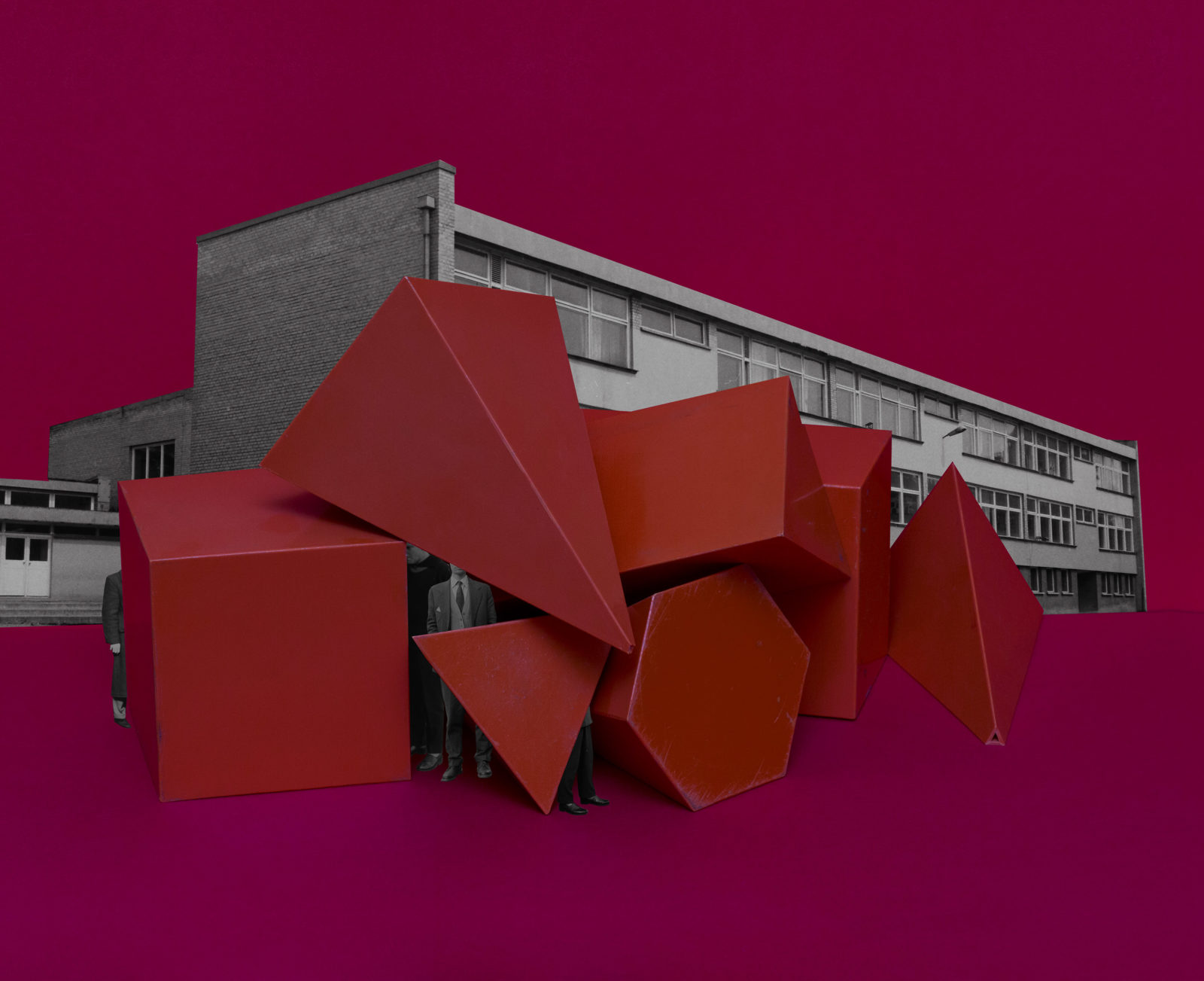
ARTWORK BY RAFAL MILACH/MAGNUM PHOTOS
People’s history
Maciej Sanigorski and Jeremi Galdamez are guarding a different kind of memory that is even more unpopular in the country than Jewish-Polish history — the history of Polish communism. Since 2017, the IPN has reinvergerated the country’s decommunization efforts of the 1990s, changing street names and removing over 200 monuments across Poland which “symbolize or propagate” totalitarianism. It’s the most public-facing work of the IPN, with the Institute’s current president holding video press conferences as workers drill and demolish monuments behind him in the shot.
Sanigorski, who works in transport for the Polish post office, and Galdamez, who writes for a history magazine and whose father was a member of Chile’s communist youth and fled political persecution for Poland in the 70s, are both left-wing organizers in Warsaw and have led a campaign to preserve the memory of Polish volunteers who fought in the Spanish Civil War in the 1930s. Poland had the second largest group of international volunteers fighting in Spain against Franco’s fascists.
So far, their biggest victory was gathering over a thousand signatures necessary to oppose an IPN order to change a street name in Warsaw named after the Polish brigade. It was a considerable undertaking in a post-communist country where anything related to socialism remains toxic.
Sanigorski and Galdamez took me past the sites where some of Warsaw’s communist monuments have disappeared overnight. Along with holding discussions about historical policies, they organize an annual memorial service for Poland’s fighters in a military cemetery in Warsaw, with delegations from Spain, Germany and Italy joining this year.
“I always say if I lived in communist times I would fight for the memory of the anti-communist resistance because you have to fight for the things that are being thrown away from history,” said Sanigorski.
Valentin Behr, a political scientist at the Paris Institute for Advanced Study, says the group is one of dozens of grassroots initiatives in opposition to the decommunization of public space and demonstrates that sometimes national memory politics can end up backfiring.
“It’s a way to produce a counter narrative to the official narrative and to show that there is another Poland that is not conservative, not fascist, which is progressive and that is forgotten most of the time in collective memory.”
Both Sanigorski and Galdamez object to the historical policies of the IPN — which they call an Orwellian ministry of truth, enforcing memory politics down to street names in small towns all across the country. However, both said it would be complicated to do away with it completely. Nearly everyone I asked had a different take on what to do with the IPN. While there’s no indication of the Institute going anywhere under the current government, there is an ongoing debate on how it could be reformed, or even dismantled if the opposition regains the majority.
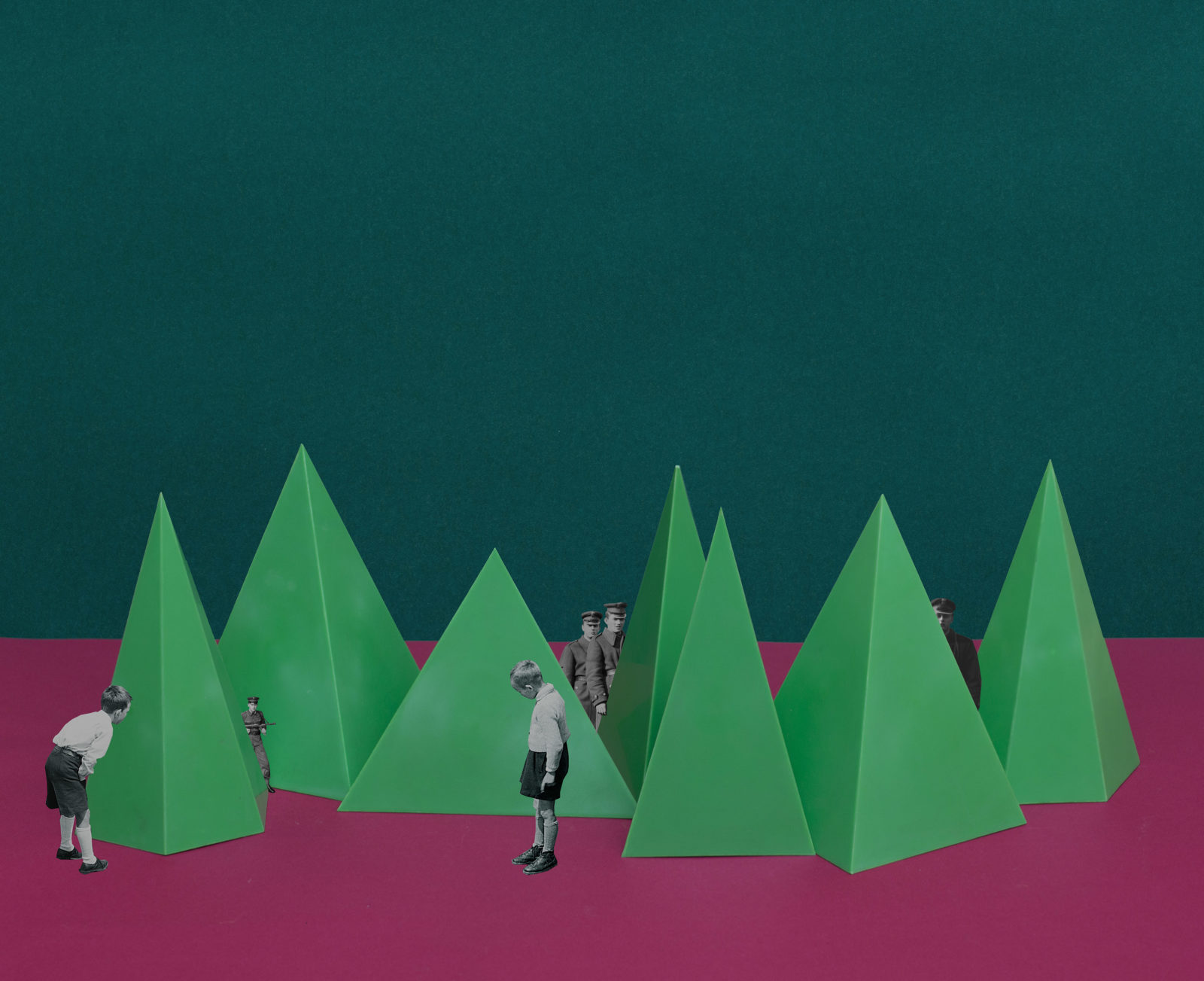
ARTWORK BY RAFAL MILACH/MAGNUM PHOTOS
Guardians of Memory
Adam Musial, a high school history teacher in Krakow for 22 years, quit his job in 2019 after finding it increasingly difficult to teach the Holocaust. “The general atmosphere in Poland surrounding memory simply reinforced my decision,” he said.
As part of a research grant he has been interviewing about 20 teachers across the country. They tell him it’s become more difficult for them to work. “The atmosphere is stifling,” he said.
He offered an example of a teacher who had tried to bring a Jewish Holocaust survivor to the school. During a faculty meeting, another teacher suggested that if they go ahead with the visit it would be best to bring in more than one speaker to offer students different perspectives on the subject. “So what, I should invite a Nazi?” the teacher quipped, eventually dropping the idea altogether.
For the past year, lawmakers have debated a new Polish law that would make it even harder for teachers to bring in outside speakers or participate in extracurricular programming. Right-wing politicians have rallied against “moral corruption” in schools — largely code for sex education — and pushed through a law that would make teachers seek written permission to bring in any outside speaker or organizations that aren’t on a selective, pre-approved government list. Along with sex education, this would shut down the majority of in-school Holocaust education activity. However, after passing through the Polish parliament, the law was vetoed by President Duda who asked lawmakers to ”postpone it,” citing the ongoing war in Ukraine. It appears the law would complicate integrating the hundreds of thousands of Ukrainian refugee students into Poland’s schools.
But the year of uncertainty has already left a mark: Poland’s largest and oldest non-profit organization dedicated to Jewish-Polish communication has been restructuring their programming, orienting away from schools to be more resilient to politics. Since 1998, the Forum for Dialogue has brought Holocaust survivors and educators to nearly 10,000 students in 400 schools across Poland, focusing on programming in small towns and villages that once had a Jewish community. A core part of the program — known as the School of Dialogue — has students at partner schools lead independent research on their community’s Jewish history, which culminates in a student-led public walking tour for local residents.
Now, the Forum is leaning into their other programs such as directly educating teachers and growing their existing network of over a hundred local historical activists across Poland. The Forum calls them “guardians of memory” — Dariusz Popiela from Nowy Sacz is one of them.
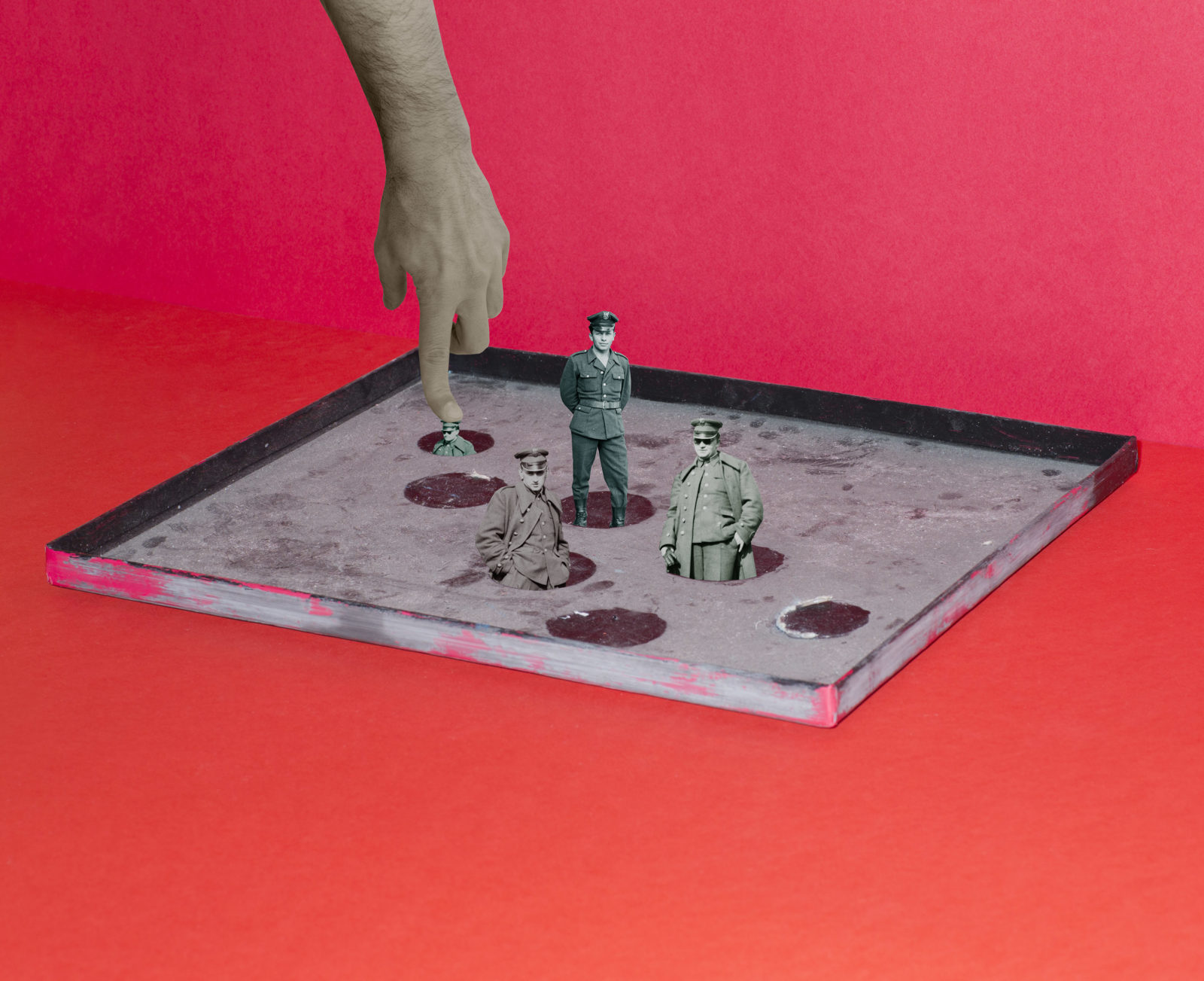
ARTWORK BY RAFAL MILACH/MAGNUM PHOTOS
Backfire
Back in Nowy Sacz, Popiela tells me about how he got lunch with his grandfather a few years ago. Popiela had already started his commemoration work at that point and they were discussing a project. At one point he noticed tears in his grandfather’s eyes. For the first time he told Popiela about a memory he had as a young boy. The town’s ghetto had been liquidated and the walls separating the ghetto from the rest of the town had come down.
His grandfather told him how he walked through the empty ghetto streets and then saw a few boys his age hiding in one of the buildings. Books, some even with gold Hebrew lettering, were scattered across the pavement. He told Popiela how stupid he felt that his family and others had gathered and burned the books because they had nothing left to make a fire with. And then he started to cry.
While his grandfather and father both support the ruling party, he says they’ve come around to his work and today the entire family pulls together on the commemoration efforts including Popiela’s young children.
Popiela says he will move out of town when his daughter turns 18 if there’s still no monument dedicated to the Holocaust in Nowy Sacz. When we met in May, he was still waiting on authorization to start building the memorial. The day before, he had been cheering on his 11-year-old daughter in her first canoeing competition down on the riverbank between the two bridges where he plans to build the second part of his commemoration.
In the weeks since, construction was greenlit. There’s an opening ceremony planned for mid-August.







